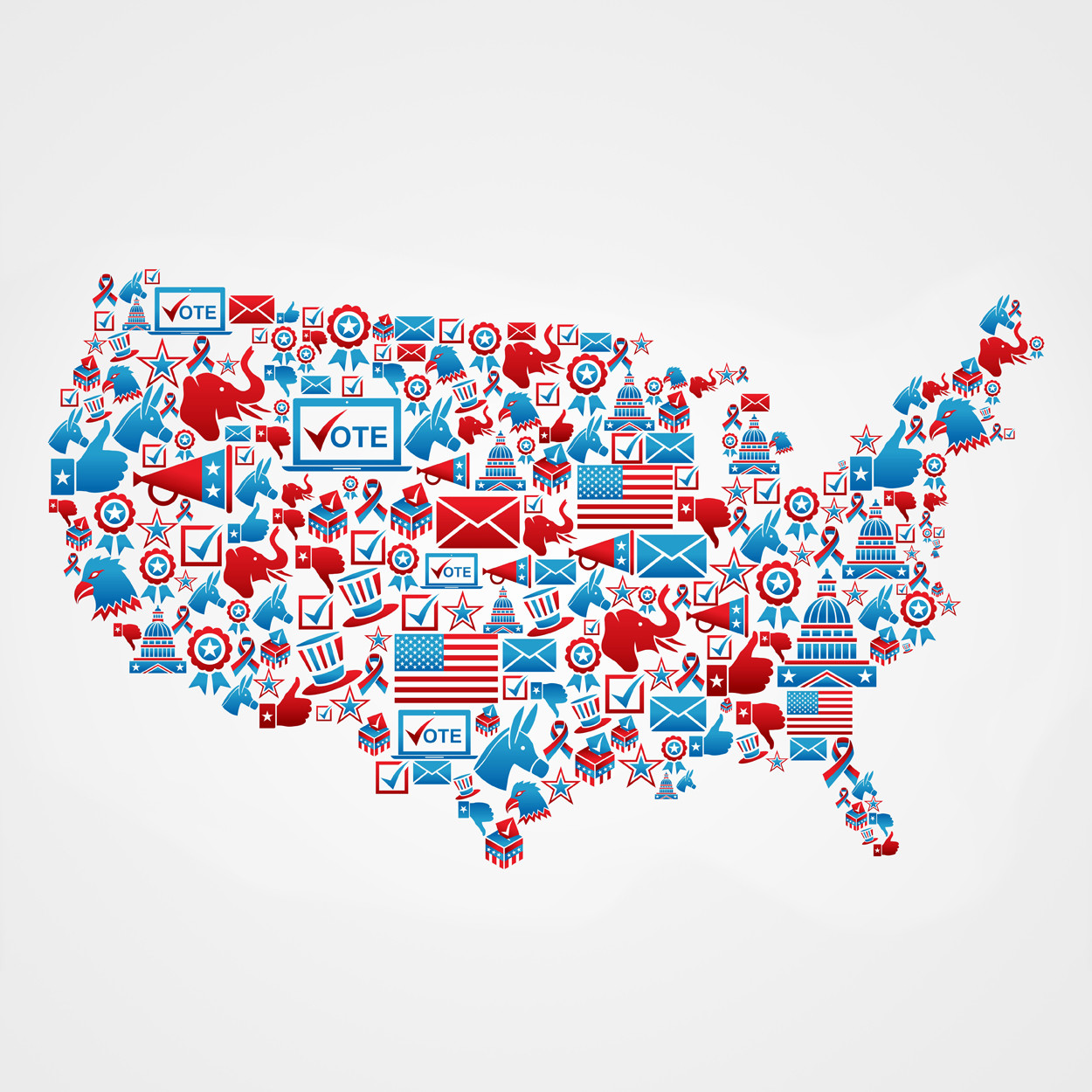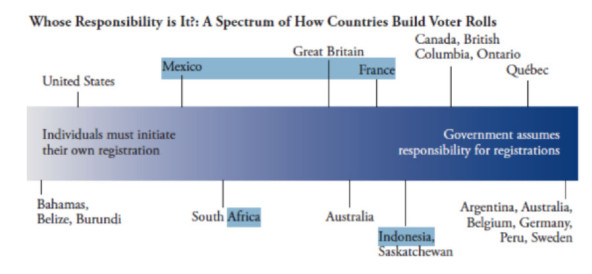The United States is one of the few democracies that place the burden of registering to vote on individual citizens. Not coincidentally, the United States also has one of the lowest voter registration rates. In all but two of the 20 countries and provinces studied by the Brennan Center in 2009, registration rates exceeded 90 percent of eligible voters, as compared to less than 70 percent in the United States.
Today, more than 50 million eligible Americans are not registered to vote. Even those who are registered risk being blocked from voting because of problems with the registration system. The Pew Center on the States found that 1 in 8 registrations nationwide are outdated, invalid, or inaccurate. Voters whose registrations are not found because of errors are often turned away from the polls or do not have their ballots counted. The resulting confusion can lead to long lines at the polls, as the bipartisan Presidential Commission on Election Administration found in its 2014 report, and additional lost votes by people who choose not to wait.

New Paradigm: Automatic Registration
But now the United States may be on the verge of a new paradigm for registering voters that has the potential to dramatically increase registration rates and improve the accuracy of the rolls. This year, for the first time, two states—Oregon and California—have passed laws to automatically register citizens to vote at motor vehicle offices (DMV). Lawmakers in 18 other states and the District of Columbia have proposed legislation along the same lines.
The concept is simple: the government will register every eligible citizen who interacts with a DMV office unless they affirmatively decline registration. This reform, made possible by improvements in database technology, entails two consequential changes: first, systems must be upgraded so that voter information can be transferred electronically (and securely) from DMVs to election officials without using separate paper forms or snail mail; and second, the default must change from “opt in,” in which voters are kept off the rolls unless they take action to sign up, to “opt out,” in which all eligible citizens are added to the rolls unless they say no.
Because these automatic registration reforms are not yet in place, it will be a while before we can measure their influence on voter registration and participation rates. But there is already powerful evidence that it will have a positive impact on both.
Increased Registration Rates
First, the evidence from abroad suggests we can expect registration rates to surge. Of the 16 countries and four Canadian provinces we examined in 2009, the only two that had registration rates below 90 percent—South Africa (77 percent) and the Bahamas (75 percent)—were also the only two where, like the United States, citizens were responsible for registering themselves. In all others, the government bore responsibility for registering voters—and achieved far better results.
 (Source: “Expanding Democracy: Voter Registration Around the World,” Brennan Center, 2009.)
(Source: “Expanding Democracy: Voter Registration Around the World,” Brennan Center, 2009.)
Similarly strong results can be achieved in the United States. Oregon officials compared the state’s DMV and voter lists earlier this year and found up to 400,000 eligible but unregistered citizens who can be automatically registered under the state’s new law—which would cut the state’s unregistered population in half. In California, officials estimate there are 6.6 million eligible but unregistered citizens.
Even more modest state reforms to modernize voter registration have had impressive results in driving up registration numbers. Recently, half the US states have moved away from paper-based registration at DMVs and now electronically transmit voter information from DMVs to election offices—the first step toward automatic registration. In two extensive studies of these reforms, we found that nearly every state that adopted electronic registration saw significant increases in registrations at DMVs. For example, after Kansas, Rhode Island, and Washington implemented this, their registration rates at DMVs nearly doubled. South Dakota’s increased nearly seven-fold. These increases occurred in opt-in systems.
The move to an opt-out system will further improve registration rates. Studies show that across a wide range of areas, setting a default choice to opt out has a significant impact on the likelihood that an individual will choose an outcome. For example, one study found participants chose to be organ donors 82 percent of the time when faced with a question framed as an opt out, compared with 42 percent for those faced with an opt-in question. Expanding automatic registration to public service agencies could also make a big difference.
Better Turnout
While voter registration does not automatically translate into voter participation, there is strong reason to believe that the sizable increases in registration and improved voter roll accuracy resulting from automatic registration will lead to measurable improvements in voter turnout.
In the first instance, automatic registration will expand the vote to the millions of Americans who are kept from voting each election because of registration barriers. According to a study by the California Institute of Technology and the Massachusetts Institute of Technology, in 2008 approximately 3 million Americans tried to vote but could not because of registration problems, and millions more were thwarted by registration deadlines and related issues. A study of in-person voters in 2012 similarly found that millions experienced registration problems at the polls. With more complete and accurate rolls, those millions would have voted.
Automatic registration will also help millions of Americans who change residences. One in nine Americans moves each year, and many fall off the voting rolls. In 2002, a Harvard University political scientist found a full one-third of unregistered Americans had previously been signed up but moved without re-registering. Many did, however, update their driver’s licenses—a step that would cause their registrations to be updated under automatic registration.
Other voter registration reforms have resulted in significant increases in turnout. One study found that simply making registration portable can boost turnout by more than 2 percent. And many academic studies show that allowing citizens to register at their polling place on election day increases turnout by a significant margin—typically 5 to 7 percent.
Automatic registration has the potential to perform even better because it does more than just remove a barrier to voting. By putting citizens on the rolls where they can be contacted, it exposes them to incentivizing influences to participate. Registered voters receive more direct contact from campaigns and other groups; a wide swath of research shows that if you are contacted in advance of an election, you are more likely to vote.
In short, automatic registration is a positive step toward engaging a larger portion of the electorate in the democratic process. It can turn the registration system from a barrier to voting to a stronger tool to encourage participation. And it can do so while improving list accuracy, reducing the potential for fraud, and saving states money.
Support SSIR’s coverage of cross-sector solutions to global challenges.
Help us further the reach of innovative ideas. Donate today.
Read more stories by Wendy Weiser.

